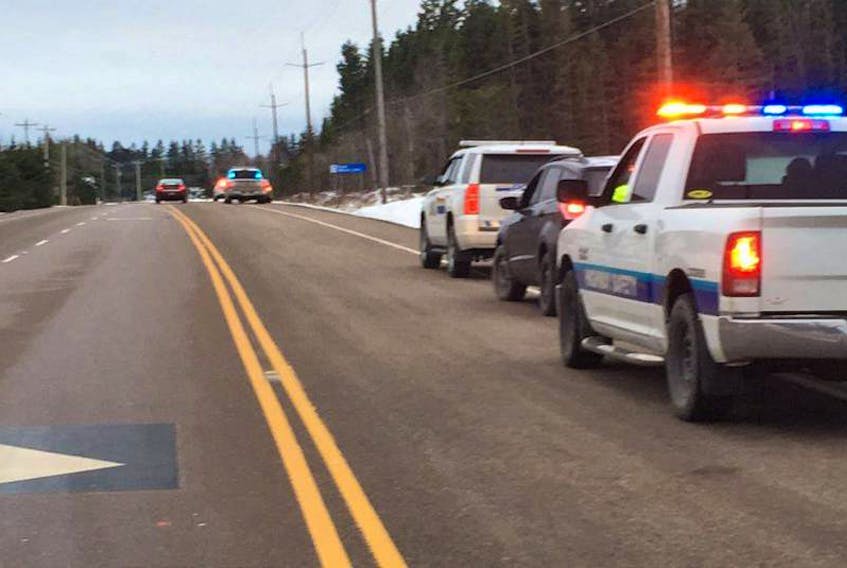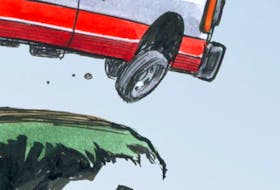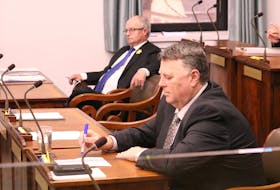It was an unexpected visual that drove home a driving tip I had just offered my teenage daughter as we idled down an ice-covered highway just west of Hunter River.
On slippery roads, I advised, you have to slow down, way down – she had just observed at the speed we were traveling, we’d be a long while getting to town.
And when you have to stop, I added, don’t wait until the last second and then slam on the brakes. Instead, my advice was to pump the brakes and, when possible, to do it well in advance of the stop.
As if on cue, a car we were meeting veered towards the ditch, then fishtailed across the highway, covering a good part of both lanes for a few agonizing seconds as it slid towards us. Fortunately, the car was far enough away that the driver was able to regain control and we passed without incident.
Not so lucky a few weeks later was the driver of a mid-sized vehicle – oblivious to persistent radio warnings of hidden “black” ice – who flew past a long line of slow-moving cars, only to slide into the ditch and down a steep embankment a few miles down the road. By the time I arrived, the driver had already gotten out of the vehicle and appeared to be unhurt.
But first responders would have been called to the scene of a mishap that should never have happened. And they’d have to get there in treacherous conditions, then re-direct traffic while they worked.
Most of us have required some assistance along the highway and, no matter the cause, first responders always answer the call.
But police are growing increasingly concerned about their safety. During a recent roadside emergency in Stratford, police say the driver of a car failed to slow down and struck an RCMP cruiser. Had the cruiser not been there, police fear the vehicle could have struck a tow truck operator. And last summer, an RCMP officer was struck by a passing vehicle while answering a roadside call near Summerside, even though emergency lights were flashing as he stepped out of his cruiser.
These incidents demonstrate how vulnerable first responders are and how every motorist has a role to play in keeping them safe. If common sense doesn’t kick in, there are rules. Drivers are required by law to slow down to at least half the posted speed when approaching or passing an emergency vehicle that is stopped along the highway with its emergency lights activated and, if required, to pull over.
Responding to highway emergencies would be challenging at any time, but even more so when travelling conditions are less than ideal. Yet, that’s exactly when we expect police officers, firefighters, paramedics and tow truck operators to respond.
As we prepare to turn the calendar on another year, drivers should resolve to do everything we can to make our highways safer. Being more attentive and slowing down, especially in adverse conditions, would reduce the number of collisions. It would also mean fewer calls to 911.
But given there will always be calls for first responders, we might also resolve to keep them safe by obeying roadside laws whenever we come across the flashing lights of emergency vehicles.
- Wayne Young is an instructor in the journalism program at Holland College in Charlottetown.









